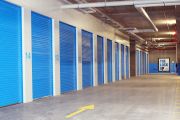
Demand rises for small, flexible offices
The rise of start-up and tech firms, often led by groups of less than 20 people, has increased activity for smaller office spaces.
According to Colliers International Research, 83 per cent of all deals that were signed up to the middle of last year were for offices of less than 1000 square metres.
In 2009, by comparison, office lease deals of less than 1000 square metres represented 71 per cent of the total.
The agency says demand for space of less than 500 square metres is particularly active – led by the growth of mid-sized enterprises.
These businesses are adopting a more flexible approach to offices, the agency says, requiring less space per employee than ever before.
Working from home is also a growing trend.
“Competitive work practices are compelling many organisations to review their work practices and space requirements,” Goodwin Property Advisory director Chris Goodwin says.
“Individual private offices are rapidly becoming a luxury of the past as the move to open-plan continues apace in an effort to reduce staff floor space occupancy ratios.”
The average worker in the Melbourne CBD now occupies less than 15 square metres. This compares to 28 square metres in 1992.
Mr Goodwin says the principles of activity-based workplace (AWB) are also being embraced in an attempt by some tenants to reduce occupancy costs.
“AWB works on the basis that an organisation will only plan space for say 80 per cent of their workforce with 20 per cent being on leave, sick, homeworking or out of the office at any one time,” he says.
“Staff are not offered desk space but a locker and a workspace on a daily first-come-first-serve basis.
“While the open-plan trend will continue to become more accepted, in some cases the move to AWB has not always been the success hoped for with many teething problems.”
Landlords such as General Property Trust and Dexus are trying to assist with changing office tenant demand, offering shared facilities such as conference rooms and meeting rooms for hire on an hourly basis.










